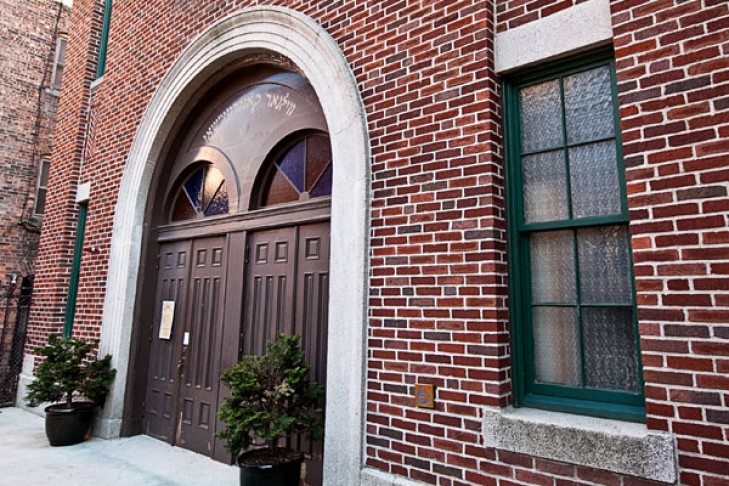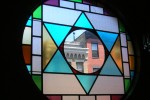Well on its way to becoming one of Boston’s most vibrant Jewish centers, the Vilna Shul is the recipient of two major grants. With Mayor Marty Walsh’s support, the Boston City Council recently approved a $500,000 grant for the 100-year-old synagogue. As reported by the Jewish Telegraphic Agency, the council unanimously voted in favor of the grant. The monies are to be disbursed under the Community Preservation Act.
In June, the Vilna was also the recipient of a $200,000 grant from the Mass Cultural Council. Together with money already raised, the grants will be used to restore and modernize the Vilna.
In an interview last week with JewishBoston, the Vilna Shul’s executive director, Barnet Kessel, gave an overview of the planned renovations for the building, as well as a progress report on the organization’s capital campaign. Kessel emphasized that the first phase of construction and renovation will focus on universal accessibility.
“The century-old building is not set up for mobility issues,” Kessel said. “We want to make sure that everyone can get inside the building and go to the second floor where the sanctuary space is. It also includes proper restroom facilities and a new daily entrance on the east side of the building.”
Josh Zakim, a Boston city councilor and son of the late Lenny Zakim, a leading civil rights activist in Boston and executive director of the Anti-Defamation League, told JewishBoston in an email exchange that, “the restoration of the Vilna is important to the history of Boston, and to the history of immigration in our city and our country.”
In addition to making the building completely accessible, a new welcome center is planned. According to Kessel, the Vilna, which is located in Boston’s Beacon Hill, welcomes up to 10,000 visitors a year. The number includes school groups, tourists and attendees of the shul’s various programs. After the restoration is complete, Kessel is planning on a 5 percent to 7 percent annual increase in the number of visitors. Currently the Vilna hosts up to 100 programs a year. “We want to grow our programming,” said Kessel, “so that the Vilna Shul can take its rightful place in downtown Boston as a center for Jewish life.”
The Vilna Shul moved to its current location at 18 Phillips St. in 1919. Known as Congregation Anshei Vilner, the congregation was founded by Jews from Vilnius, Lithuania. The synagogue thrived for 65 years, but changing demographics, as well as an ambitious urban renewal project in the West End of Boston, left the Vilna as one of the only synagogues in that area. The building held its last Rosh Hashanah service in 1985 and was unused until 1994. In 1995, the building was made partially habitable to return as a center for Jewish culture.
Kessel pointed out that over decades the shul was adorned with three distinct folk-art murals, each one covered in paint. “The first,” said Kessel, “was a very traditional Promised Land landscape. It was restored on the back wall of the women’s gallery. That mural contains a beautiful image of Rachel’s Tomb on the right, and an image of the Cave of the Patriarchs on the left.”
The last layer of paint, which was applied in the 1940s, covered an art nouveau mural. Observed Kessel: “It’s interesting to see that the first paint layer covered historic and religious art. It parallels the fact that the first congregants were immigrants that fled the Russian Empire. There was a lot of persecution and religious oppression. That particular artwork represents that they were able to practice their religion freely and put up imagery in their shul without worry about the repercussions.”
Showcasing art is integral to the Vilna’s mission, and Kessel looks forward to the shul having an HVAC system that includes a modern heating system, air conditioning and humidity control. In addition to making the building comfortable for visitors and staff alike, being able to control the building’s temperature and humidity makes it conducive to art restoration. Kessel hopes the Vilna will also become a destination for traveling exhibits. “It’s hard to get someone to give us or even lend us valuable artwork if we can’t control the temperature,” he said.
As of this writing, the Vilna Shul has raised close to $3.5 million of its $4 million goal. If the capital campaign continues on track, Kessel said the project will break ground by October of this year.
“We are lucky to have such an important building still standing, and to have a community of advocates dedicated to preserving this building for the next generation,” noted Zakim.
For his part, Kessel sees the Vilna Shul “as embodying Boston’s Jewish and immigrant history, as well as its present and Jewish future. We are grateful for all of the support we’ve received.”





